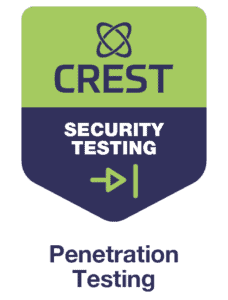Uncover the Hidden: The Comprehensive Guide to Penetration Testing
7th Jul 2023
Speak to an expert
7th Jul 2023
In today’s digital landscape, where cyber threats are rampant, businesses and organisations must take proactive measures to secure their systems and data. The escalation in average costs associated with data breaches, as reported in the IBM Cost of a Data Breach Report 2022, has gone up from $4.24 million in 2021 to $4.35 million in 2022. This accounts for an increase in cost of 2.6% and is the highest year-on-year increase recorded since reporting began. One such essential practice that organisations can use to protect themselves is penetration testing.
This comprehensive guide aims to demystify penetration testing, its process, types, tools, challenges, and benefits.
Penetration testing, also known as pen testing or ethical hacking, is a proactive security assessment process that simulates real-world attacks on computer systems, networks, or web applications. The primary objective of penetration testing is to identify vulnerabilities and weaknesses in the target system before cyber criminals can exploit them.
Pen testing plays a crucial role in ensuring the security and resilience of an organisation’s digital infrastructure. The first half of 2022 alone saw nearly 236.7 million ransomware attacks occur worldwide. By uncovering vulnerabilities and providing insights into potential risks, penetration testing enables businesses to strengthen their security measures, protect sensitive information, and prevent unauthorised access.
Pen testing involves a systematic approach that follows a well-defined process. The key steps involved include:
During the pre-engagement phase, the penetration tester and the client establish a clear scope of the assessment, define the goals and objectives, and agree on the rules of engagement. We will gather information about the target system, network, or application and identify potential vulnerabilities and attack vectors. This phase ensures a mutual understanding of the project requirements and expectations.
In this phase, the penetration tester collects specific information about the target system, such as IP addresses, domain names, and network infrastructure. The latest automated tools and techniques, such as open-source intelligence (OSINT), are commonly used to gather data from publicly available sources to complete this stage. This process helps in prioritising the testing efforts and focusing on the most critical areas of the system.
During vulnerability assessment, the penetration tester uses various scanning and enumeration tools to identify vulnerabilities in the target system. This may include port scanning, service identification, and vulnerability scanning. The vulnerabilities will then be prioritised based on their severity and potential impact. This stage allows penetration testers to determine the potential risks associated with each vulnerability.
Exploitation involves attempting to exploit the identified vulnerabilities to gain unauthorised access or escalate privileges within the system. The penetration tester may use manual techniques or automated tools to exploit vulnerabilities. This stage of the process is always done without causing any disruption to business operations.
Once access to the system is gained, the penetration tester explores further to determine the extent of the compromise and assess the potential impact of the attack. Once penetration testers have attempted to pivot or escalate privileges within the network, they will remove any scripts from the compromised systems. This phase helps in understanding the severity of the vulnerabilities and their potential consequences.
After completing the testing process, the penetration tester prepares a detailed report that includes identified vulnerabilities, exploited systems, and sensitive data accessed. It will then go on to provide recommendations for mitigating the identified vulnerabilities and improving overall security. Ultimately, the purpose of the final report is to help the client understand the risks and take appropriate actions to improve the security posture.

Pen testing can be categorised into different types based on the target and scope of the assessment:
Network penetration testing focuses on assessing the security of network infrastructure, including routers, switches, firewalls, and other network devices. It aims to identify vulnerabilities that could be exploited to gain unauthorised access to the network.
This involves assessing the security of web applications, such as e-commerce websites, online portals, and web services. It aims to identify vulnerabilities like SQL injection, cross-site scripting (XSS), and insecure authentication mechanisms.
Wireless pen testing assesses the security of wireless networks, including Wi-Fi networks. It aims to identify weaknesses in encryption protocols, access controls, and authentication mechanisms, which could lead to unauthorised access.
Social engineering pen testing focuses on testing the human element of security by attempting to exploit psychological manipulation techniques. It assesses the effectiveness of employee training programs and the organisation’s resilience to social engineering attacks.
Penetration testers utilise various tools and techniques to conduct effective assessments. Here are some commonly used tools:

While penetration testing is a valuable practice, it comes with its own set of challenges. Here are some challenges and best practices to consider:
Penetration testers must operate within legal boundaries and obtain proper authorisation before carrying out assessments. It is crucial to adhere to ethical guidelines, respect privacy, and protect sensitive data throughout the testing process.
Clear communication with stakeholders, including clients, system administrators, and IT teams, is key. Working together openly ensures a smooth testing process and helps everyone understand risks and solutions.
Pen testing should be an ongoing process, not a one-time event. Regular tests find new weaknesses and keep security strong. Quickly fixing any issues is just as important.
It offers a host of benefits to organisations. Here are some key advantages:
It helps organisations identify vulnerabilities before malicious actors exploit them. By identifying security weaknesses early, businesses can fix issues to reduce risks and prevent breaches.
It provides insights into the effectiveness of existing security controls and helps organisations improve their security posture. It enables the implementation of necessary security patches, configuration changes, and best practices.
Penetration testing is often a requirement for compliance with industry regulations and standards. By conducting regular assessments, organisations can demonstrate their commitment to security and compliance requirements.
As a CREST Approved Penetration Testing service provider, our team of highly skilled in-house UK-based penetration testing experts deliver cutting-edge solutions to protect businesses from evolving cyber threats.
What’s more, our verified 4.9* Trustpilot rating makes us the most trusted IT security service provider in the UK.
Get in touch to discuss how we can help your business become more secure today.
Penetration testing is a crucial practice in today’s cybersecurity landscape. By simulating real-world attacks and identifying vulnerabilities, organisations can strengthen their security measures, protect sensitive data, and stay one step ahead of potential threats.
By following best practices and engaging with stakeholders, businesses can ensure a successful and impactful penetration testing process.
Contact Assure Technical if you have any questions or need support with penetration testing for your organisation. Our dedicated team of in-house cyber security experts are on hand to help you with all of your security needs.
Assure Technical keep cyber security simple. We provide expertise with a personal touch – no cut corners, no jargon, no waffle, just straight-talking security solutions.
Penetration testing tries to exploit vulnerabilities to measure the impact of attacks, while vulnerability scanning simply identifies weaknesses without exploiting them.
The frequency of pen testing depends on various factors, including the organisation’s risk profile, industry regulations, and the rate of system changes. Generally, it is recommended to conduct pen testing at least annually or after significant system modifications.
It is performed with the utmost care and adherence to ethical guidelines. However, there is always a slight risk of unintended consequences. Skilled and experienced penetration testers take necessary precautions to minimise any potential damage during testing.
Penetration testers should possess a strong understanding of networking, operating systems, and various types of attacks. Certifications such as Certified Ethical Hacker (CEH), Offensive Security Certified Professional (OSCP), and GIAC Penetration Tester (GPEN) demonstrate competence in the field.
This varies depending on factors such as the scope of the assessment, the complexity of the system, and the availability of resources. It can range from a few days to several weeks, including pre-engagement discussions, testing, analysis, and reporting.
Get in touch with our expert consultants for straight-talking, jargon-free technical security advice.













